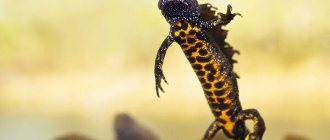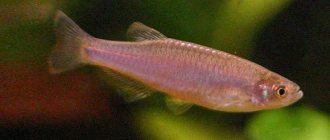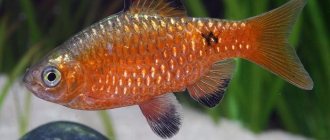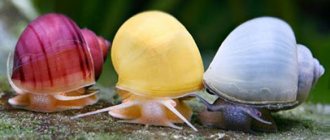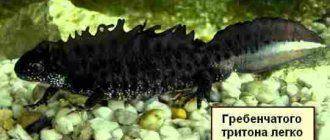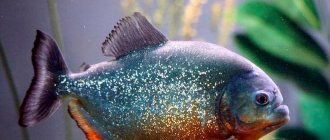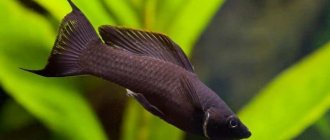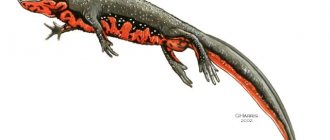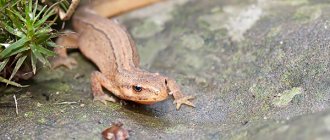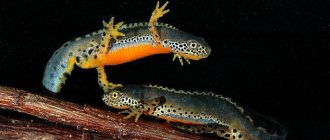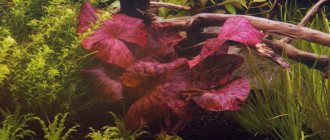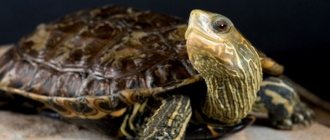- Wild animals
- >>
- Amphibians
The spiny newt (Pleurodeles waltl) is a species of amphibian belonging to the genus Ribbed newts from the order Caudate amphibians. The spiny newt is one of the largest species of newts, the most important feature of which is the pointed ends of the costal bones, protruding from the sides in times of danger. The thing is that poison is secreted at the ends of the ribs, causing discomfort in the predator and forcing it to leave its prey alone. This is where the name came from.
Origin of the species and description
Photo: Spiny newt
Spine newts and other newt species are very ancient amphibians that were once very widespread. Over time, glaciers of the Quaternary period pushed them to the southern and western parts of Europe. Today, this species lives in a very limited area, where it is officially recognized as endemic.
Video: Spiny newt
These are relatively large animals that in natural conditions can grow up to 23 cm in length, but in captivity their length can reach 30 cm or even more. Females, as a rule, are larger in size than males, but do not differ from them in any other way. Spine newts do not have a dorsal crest. Their tail is quite short - about half the length, flattened, trimmed with fin folds, and rounded at the end.
The skin is dark brown or almost black with lighter blurred spots. It is uneven to the touch, very granular, lumpy and glandular. There are a number of reddish or yellow spots on the sides of the body. It is in these places that the sharp ends of the newt's ribs protrude in case of danger. The abdomen of amphibians is lighter, grayish in color and has small dark spots.
Interesting fact: An albino form of spiny newts was recently bred in captivity - with a white back, a white-yellow belly and red eyes.
Diseases
Unfortunately, it is not always possible to protect an amphibian from any adversity. Newts can suffer from both fungal and infectious diseases , and they are not immune from parasites.
Often, amphibians develop a dangerous disease popularly called “red leg .
In essence, this is sepsis, and the disease is determined by the main symptom - redness of the upper part of the legs and abdomen caused by subcutaneous hemorrhage.
The sick individual must be immediately quarantined. It is advisable to take your pet to a veterinary clinic and undergo tests to select the necessary antibiotic. If this is not possible, the medicine will have to be selected experimentally.
Tetracycline is most often used. If an epidemic begins in the aquarium, you will have to completely disinfect and restart the artificial pond .
Appearance and features
Photo: Spanish spiny newt
Newts have smooth and shiny skin while they are in the water. When animals come onto land to breathe or hunt, their skin becomes severely dehydrated, becoming rough, rough and dull. The head of amphibians is similar to that of a frog with small, bulging golden eyes located on the sides.
Due to the many glandular dorsal growths, the body of spiny newts appears square when viewed from across. The animal skeleton has 56 vertebrae. In addition to the sharp ribs that protrude through the skin in defense, the newt has numerous venom glands throughout its body. The venom of spiny newts is weak and not lethal, but when it gets into scratches on the mucous membranes of the enemy, caused by the sharp rib bones of the newt, it causes pain to the predator.
Interesting fact: The cloacal lips in females are very developed, while in males they are hypertrophied.
Now you know what a spiny newt looks like. Let's find out where he lives.
Compatibility
Keeping a Spaniard in the same tank with aquarium fish is not the best idea. This is confirmed by two facts:
- Fish require a different temperature regime to live.
- Despite its peaceful nature, the newt is a predator that, given the opportunity, will try to bite its neighbors.
If the situation is hopeless, then the best neighbors will be guppies, neons or corydoras living in different water layers.
Where does the spiny newt live?
Photo: Spine newt in Spain
The ribbed newt's homeland is Portugal (western part), Spain (southwestern part) and Morocco (northern part). Newts live mainly in bodies of water with cool, fresh water. Rarely found in the mountains of Granada (Sierra di Loggia) at an altitude of up to 1200 m. They can also be found at a depth of 60-70 m in caves near Bouhot or Ben Slymane in Morocco. The Spanish spiny newt lives at a depth of up to 1 m in low-flowing water bodies: in ditches, ponds, lakes.
Interesting fact: Not long ago, Swedish biologists deciphered the genome of the spiny newt. As a result of the research, it was found that the animal DNA code contains several times more genetic information than the human DNA code. In addition, newts have the largest regenerative repertoire of any four-legged animal. They can grow and remodel their tails, limbs, jaws, heart muscle, and even brain cells. The next stage of the research will be a detailed study of how brain cells regenerate and how exactly stem cells are involved in the regenerative processes of adult newts.
The purity of water is not important for these amphibians. They also do well in slightly salted waters. The Spanish newt can lead both aquatic and terrestrial lifestyles, but prefers the first, so you rarely see it on land. Spine newts usually live in the same body of water for several years, or even their entire lives. If for some reason their habitat is no longer suitable for them, they migrate in search of a new home, and do this during rain to avoid dehydration. In summer, during intense heat, during very dry periods, amphibians can leave bodies of water and hide in deep burrows and crevices between stones. At this time, newts are very difficult to detect, so they come to the surface at night and only to hunt.
Keeping in an aquarium
Keeping the Spanish newt in an aquarium, despite its exotic nature, is simple, which is why these amphibians are so popular among aquarists. You can put a couple of pets in one container, the main thing is that each representative has at least 15-20 liters of liquid. In order for Spanish newts to feel good, the following conditions must be met:
- A filter is installed in the aquarium to purify the liquid. Pets do not need an aerator - Spanish newts breathe by floating to the surface.
- Pebbles or granite chips are used as soil. Vegetation is planted alive, choosing different types of flora.
- The tank is decorated with decorations chosen to your taste. Be sure to place a large flat stone and shelters for pets where they can hide and rest.
- The temperature in the aquarium is set in the range of 15-20C, since Spaniards are cold-blooded creatures. To create and maintain the required temperature conditions, fans, ice bottles, and cooling devices are used.
Gradually getting used to the owner, the amphibians, when the owner approaches, swim to the wall, recognizing the aquarist. When excited, pets make funny sounds reminiscent of the croaking of aquarium frogs. You can learn more about the behavior of newts in the aquarium by watching a video on this topic.
What does the spiny newt eat?
Photo: Spiny newt from the Red Book
Spiny newts are real predators, but they are not particularly gourmets when it comes to food, so they can eat anything. The main condition: their potential food must fly, run or crawl, that is, be alive. Newts were not observed eating carrion even under very unfavorable conditions, but cases of cannibalism, especially in captivity, did occur.
The daily menu of amphibians looks something like this:
- shellfish;
- worms;
- small invertebrates;
- insects;
- young snakes.
In the summer, when it is very hot even in the water and newts are forced to hide from the heat, they easily tolerate short-term fasting. During the mating season, when the instinct to procreate comes to the fore and becomes stronger than other needs, amphibians also eat practically nothing, but constantly fight with rivals, court females, mate, and spawn.
In captivity, spiny newts also prefer to eat live food. Earthworms, flies, grasshoppers, snails, slugs, bloodworms, as well as pieces of raw frozen meat or fish are suitable for this. It is strictly not recommended to feed newts with dry or wet food for cats or dogs, since they contain ingredients that are completely uncharacteristic of the natural diet of newts.
Feeding
All newts are predators and eat anything that moves and can fit into their mouth. They are fed with bloodworms (only juveniles and small species; large animals ignore bloodworms), earthworms, larvae of brownie and banana crickets. Newts are happy to find and catch live food themselves.
Of course, you need to be careful not to introduce an infection with it (we wrote about newt diseases and their treatment in some detail in another article).
If there is no live food (or you do not want to risk using it), you can feed the newts frozen bloodworms, pieces of lean fish or shrimp. It is not recommended to use meat from warm-blooded animals.
Newts usually do not respond to stationary food, so it must be given with tweezers, shaking it in front of the animal's face. Some newts become accustomed to dry food.
The more varied your pet's food is, the better for their health and well-being.
Regarding the frequency of feeding, we can say that newts determine it themselves. Unlike their distant relatives, frogs, newts are not known for their gluttony, so they will not eat too much, and once they have eaten, they will turn their faces away from even the most appetizing worm. Typically, juveniles are fed 1 or 2 times a day, and adult animals once every 2-3 days.
Features of character and lifestyle
Photo: Spiny newt
Ribbed newts feel good both on land and in water, but they may not come onto land at all for several years. The animals’ favorite pastime is to “hang” in the water for a long time, examining the surroundings. Depending on weather conditions, they can lead both a diurnal and nocturnal lifestyle. For example, in the off-season, when it is not too hot, newts prefer to hunt during the day. In the summer, when the air temperature rises greatly, newts are forced to hide in holes and caves during the day and go out to hunt at night.
Interesting fact: Spine newts are characterized by molting. There are no clear molting periods - everything is individual for each individual.
Newts need to molt because they breathe through their skin. It is literally permeated with thin blood vessels (capillaries), in which the blood is enriched with oxygen directly in the water. This feature allows amphibians not to frequently come to the surface for air. Since spiny newts are not very sensitive to the purity of water, their skin quickly becomes dirty. Contaminated skin interferes with proper breathing, so newts shed it.
Interesting fact: In nature, spiny newts can live up to 12 years, in captivity - up to 8 years. Although much, if not all, depends on nutrition and living conditions.
Research[ | ]
Spiny newts have been sent into space several times for research. The first Iberian ribbed newts in space appeared in 1985 on board Bion7
.
Next, ten newts set off on a journey in the company of two macaques and ten rats on the Soviet satellite Cosmos, without a crew. Then, in 1992, Bion10
Bion11
in 1996 [8]. In 2005, Foton-M2 also carried an Iberian ribbed newt.
Research on spiny newts was continued later in 1996 with experiments on the Mir space station (Mir-Cassiopeia expedition [9]), with subsequent studies in 1998 (Mir-Pegasus expedition) and 1999 (Mir-Perseus expedition). The studies examined the ability of newts to regenerate, which in space manifested itself faster overall and up to two times faster in the early stages [9]), and also looked at the stages of development and reproduction of newts in space.
Tritons were chosen for these studies in part because they are a good model for studying microgravity[10]. Their females are able to retain live sperm in the cloaca for up to five months, which allows them to inseminate on Earth, and later, in space, independently induce fertilization through hormonal stimulation. Another advantage of this species was their slow development, thanks to which it was possible to observe all the key stages of ontogenesis from the egg to the embryos or larvae.
On Earth, studies have also been conducted on the effects of hypergravity (up to 3) on the fertilization of spiny newts, as well as on the fertility of space-born newts after their return to Earth. They continued to be fertile and had no health problems[9].
Social structure and reproduction
Photo: Spanish spiny newt
Spine newts can give birth 1-2 times a year. The first breeding season occurs in February-March, the second in July-August. By the type of their social behavior, they are solitary animals that gather in groups only during the mating season.
Sexual maturity in amphibians occurs between 1 and 3 years, which depends on their living conditions. As mating season begins, male newts develop calluses on their paws. It is not entirely clear why they are needed. Probably for protection during fights with rivals.
The mating season has the following stages:
- mating fights;
- courtship;
- pairing;
- caviar throwing.
During mating fights, males fight among themselves, and quite brutally. The courtship process includes a sort of prelude to the act of mating. The male grabs the female he has caught in a fair fight with his paws and for some time “rolls” her in a peculiar way along the bottom of the reservoir. After foreplay, mating begins. The male touches the female's muzzle with his paws and gently clasps her from below, at the same time releasing seminal fluid onto the body and moving her with his free limbs towards the cloaca. The mating ritual can be repeated 5-7 times.
2-3 days after mating, spawning begins. Depending on size and age, a female newt can lay up to 1,300 eggs. The eggs are attached by the female to the leaves and stems of aquatic plants in the form of chains of 10-20 pieces, where the incubation process then takes place.
Interesting fact: Spine newt eggs are up to 2 mm in diameter, while the diameter of the gelatin envelope is no more than 7 mm.
Under favorable conditions, larvae hatch from the eggs after 15-16 days. The first few days of life they do not feel the need for food at all. Next, the larvae feed on simple single-celled organisms. The length of the larvae is 10-11 mm. After about three months, the larvae begin the process of metamorphosis, which lasts another 2.5 - 3 months. Upon completion of metamophosis, the larvae turn into small newts, which differ from adults only in their size.
Interesting fact: In their first year of life, young newts can grow up to 14 cm.
Notes[ | ]
- ↑ 1 2 Ananyeva N. B., Borkin L. Ya., Darevsky I. S., Orlov N. L.
Five-language dictionary of animal names. Amphibians and reptiles. Latin, Russian, English, German, French. / under the general editorship of academician. V. E. Sokolova. - M.: Rus. lang., 1988. - P. 33. - 10,500 copies. — ISBN 5-200-00232-X. - Classification of species Amphibian Species of the World (inaccessible link) (English) on the Global Amphibian Assessment website
- Description and range of the spiny newt Archived copy of March 2, 2008 on the Wayback Machine (English)
- Description of the species Pleurodeles waltl
(English) on the website Livingworld.org Archived copy of April 29, 2011 on the Wayback Machine - Description of the species (English) on the AmphibiaWeb website
- Description of the species (English) on the website caudata.org
- ↑ 1 2 Kuntz, S.;
Amand Chesnel; Stéphane Flament; Dominique Chardard. Cerebral and gonadal aromatase expressions are differently affected during sex differentiation of Pleurodeles waltl (english) // Journal of Molecular Endocrinology. - 2004. - No. 3. - P. 717–727. - ISSN doi:10.1677/jme.1.01588. - Grinfeld, S.;
Foulquier, F.; Mitashov, V.; Bruchlinskaia, N.; Duprat, AM Tissue regeneration in space (spinal cord, muscle and bone) in the amphibian Pleurodeles waltl (English) // European Space Agency. - 1994. - P. 181. - ISSN 1994ESASP.366..181G. - ↑ 1 2 3 Christian Dournon, Danielle Durand, Christiane Tankosic, Hervè Membre, Lydie Gualandris-Parisot.
Effects of microgravity on the larval development, metamorphosis and reproduction of the urodele amphibian Pleurodeles waltl (English) // The Japanese Society Developmental Biologists. - T. 43. - P. 315-326. — ISSN 10.1046/j.1440-169x.2001.00575.x. - Gualandris-Parisot, L.;
Husson, D.; Foulquier, F.; Kan, P.; Davet, J.; Aimar, C.; Dournon, C.; Duprat, AM Pleurodeles waltl, amphibian, Urodele, is a suitable biological model for embryological and physiological space experiments on a vertebrate // Advances in Space Research. - 2001. - T. 28. - P. 569-578. — ISSN 10.1016/S0273-1177(01)00384-2.
Natural enemies of spiny newts
Photo: Spine newt from Spain
As mentioned earlier, spiny newts protect themselves from predators who want to hunt them with the help of ribs and a toxic substance that is secreted at the ends of the costal bones in moments of danger. However, the venom of newts is not fatal, which often plays to their detriment. Cases of cannibalism among spiny newts also occur, but they are very rare.
Since adult newts are quite large in size - up to 23 cm, they do not have many natural enemies, but they can be hunted by large snakes that swallow their prey whole and birds of prey (eagles, hawks) that kill their prey. throwing from a height onto rocks. Since spiny newts are very clumsy on the ground, they can be easy prey for herons and cranes.
As for the young, the larvae and little newts will have more enemies in nature. For example, frogs and predatory fish successfully hunt larvae. Moreover, newt caviar, containing a lot of protein, is also an excellent treat for toads and fish. Small newts are also hunted by smaller snakes, birds and even four-legged animals. Zoologists have calculated that on average there are 1000 eggs laid, of which barely half survive to sexual maturity.
Population and species status
Photo: Spiny newt
Ribbed newts, like most amphibians, are quite fertile. Moreover, they have two mating seasons a year. However, even this in the modern urbanized world cannot save the situation, and today in all three countries the population of the spiny newt has greatly decreased and continues to decline.
The main reasons for the decline in the population of spiny newts:
- short lifespan. In the wild, a newt lives no more than 12 years. There are many reasons for this, such as natural disasters, lack of food, natural enemies;
- poor ecology, severe pollution of water bodies with waste and various chemicals. Although spiny newts are not very sensitive to not very clean water, with the development of industry and farming, so many harmful chemicals enter the water that even newts cannot live in it;
- geographic changes in natural habitats. For the sake of agricultural development, swampy lands are often drained, which ultimately leads to the disappearance of reservoirs where newts previously lived;
- The spiny newt is in great demand as a pet. Of course, they are bred in captivity for sale, but the illegal capture of wild newts, especially young animals, simply causes irreparable damage to the population.
